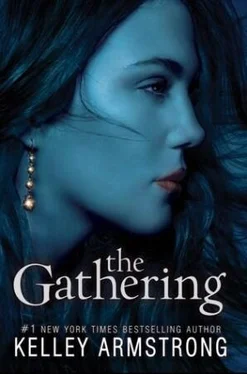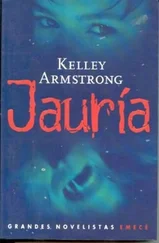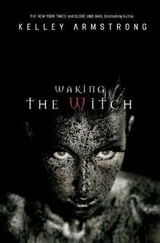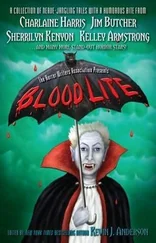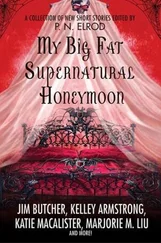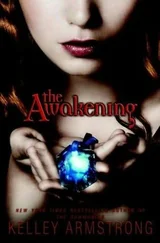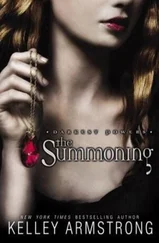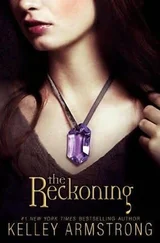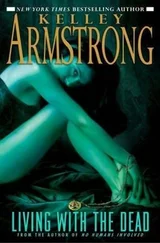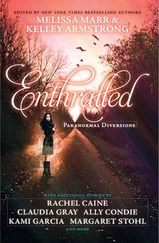“She doesn’t want to tattle on the cute kitty,” I said. “Don’t worry. Just hand her the papers while she’s cornered again by a hundred and seventy-five pounds of snarling kitty and she’ll change her mind.”
IT TOOK US FIVE minutes to get out of Salmon Creek. Without exceeding the speed limit. When I tell people that I live in a place with fewer than two hundred people, they don’t really get what that means. They say things like, “Oh, I’m in a small town, too,” and I look up theirs to see it has a population of six thousand.
Two hundred people means Salmon Creek doesn’t get on most maps. It’s not even a town—it’s a hamlet, with only six streets—the downtown strip and five courts of about ten houses each.
There are three shops downtown. There’s a decent grocery, but if my mom needs anything more exotic than white mushrooms and dried herbs, she has to grow it in our greenhouse. There’s a hardware store, but if you want something unusual, it has to be ordered from the city. Then there’s the Blender, our only restaurant, owned and run by Hayley’s dad. Good food but don’t expect sushi.
Kids in other small towns complain about needing to go to the city to find a mall. We can’t even buy clothing here. Well, we can, but it’s carried by the hardware store; and unless your fashion sense runs to coveralls and rubber boots, you’d better plan a trip to Nanaimo.
The last building we passed on the way out of town was the medical research facility. That might sound like a huge hospital-sized place, with helicopters landing on the roof at all hours, but it’s just a boring-looking building, two stories tall, about the size of a small office complex. It looks innocent enough, like you could walk right through the front doors. And you could … you just wouldn’t get much farther.
Security is supertight in there. Every door has a key card lock and some have access codes, too. I know because I’ve been in it. Everyone has. One problem with running a top-secret facility is that it makes people curious. So every year there’s an open house. Most of us kids stopped going as soon as our parents let us. It’s an afternoon of hearing talks on their drug research and being toured around labs full of computers and test tubes. Drug research may be big business—big enough to build a town to protect it—but it’s killer dull.
I’d be a lot more interested—in a negative way—if they were doing animal testing. If they are, it isn’t here. Same with subject groups; they don’t ever visit Salmon Creek. The helipad on the roof is only for flying in other doctors—like Dr. Davidoff and his group—and corporate bigwigs from the St. Cloud company, who want to keep tabs on where their money is going.
So Salmon Creek is a small, quiet place. Maybe I’d be itching to get out if I remembered living somewhere else. But most kids are fine with Salmon Creek. We get used to driving an hour to the city. Our parents have carpooled monthly trips for us since we were young. Almost all of us plan to go off to college or university, and not many intend to return, but we’re happy enough living here until then.
When we finally got to Nanaimo, we parked at the harbor front. There’s a ferry up the coast that will take you over to Vancouver across the Strait of Georgia. You’d be able to see the city from the harbor if there weren’t islands in the way. Well, in theory you could, though at this time of year we usually get fog, and sometimes you can’t see even those nearby islands, despite them being close enough to swim to if you’re really good. Serena swam out to Protection Island once and we—
I shook off the memory.
Canada might be famous for its winters, but that doesn’t apply here. Vancouver Island is temperate rain forest. We get rain, not snow. This year, our dry summer was holding on, and the occasional memo about small wildfires in the interior was making Dad nervous. Nobody else was complaining, that was for sure, and it was nice to look out and see all the islands, not a curtain of fog.
We walked along the marina docks. It was a gorgeous afternoon, the sun shining off the water, boats lined up at the floating Petro-Can station to fill up before heading out to sea. An engine whined as a seaplane took off.
We crossed Front, then cut along a tiny street before coming out on Commercial. I scanned the street, a mix of local and tourist shops, about half of them devoted to food.
“Can we get a snack before we shop?” I asked. “I’m starving.”
Mom shook her head. “You can grab a chocolate bar, but we need to be someplace before five.”
“No, that’s okay,” Dad said. “Go ahead.” When Mom gave him a look, he said, “If she’d rather get something to eat, let her. There’s always next year. Or the year after that …”
I stopped walking. “Okay, what’s up?”
When neither said a word, I peered down the street of shops and saw a sign that caught my eye: Sacred Ink.
“Oh my God,” I said. “Seriously?” I grinned and grabbed Mom’s arm. “Seriously?”
“Yes. You’re getting your tattoo.”
I threw my arms around Dad’s neck. “Thank you!”
“Hey,” Mom said. “I’m the one who had to persuade him it wasn’t going to turn his little girl into a streetwalker.”
“I never said that,” Dad said.
“No?” I said. “Cool. Cause I’ve decided to skip the paw print. I’m thinking of a tramp stamp with flames that says ‘Hot in Here.’ No, wait. Arrows. For directionally challenged guys.”
Mom grabbed Dad’s shoulders and steered him away from me. “She’ll get exactly what we agreed on. Now go hang out in a guy store and we’ll call when we’re done.”
“This is so cool,” I said loudly as Dad walked away. “Have you met the tattoo artist? Is he hot?”
“He’s a she,” Mom said.
“Is she hot? Cause I’m still young, you know. My sexual identity isn’t fully formed.”
“Your father can’t hear you anymore, Maya.” Mom sighed. “Poor guy. Why can’t you be a normal teenage daughter who’d sooner die than say the words ‘sexual identity’ in front of him?”
“You guys raised me right. You should be proud.”
I picked up my pace, but Mom said, “No need to run. Your appointment isn’t for another twenty minutes.”
I slowed to let her catch up. “So how’d you get Dad to agree? Did you play the cultural card?”
“Of course not. That would be wrong.”
I grinned. “You did, didn’t you?”
Dad’s quick to defer to her on that part of my upbringing. If she’d told him that tattooing was a part of Native culture, he would have backed down.
Mom’s background, though, is as different from mine as English is to Irish. That makes it tough on her. She wants me to be aware of my roots, but she isn’t really sure what they are, so she teaches me what she knows instead.
My Haida grandmother lives in Skidegate on the Queen Charlotte Islands north of us, and we’re really close. She’s a lot more into the traditions than my mom is. I love hanging out with her, working at the cultural center, and helping with the festivals. But sometimes I feel like one of the tourists. I felt the same way when I was twelve and we visited a Navajo reservation. And I felt the same way when we went to visit Dad’s extended family in Dublin. I’m aware of my background, and I’m proud of it, but I don’t really feel attached to it. Maybe that’ll change someday.
I wasn’t surprised when we got close to the tattoo studio and I saw a Haida raven painted on the sign. Inside, I could see more native art … and a shocking lack of skulls, Celtic crosses, and dragons.
“Cool,” I said.
“The owner is a young woman who graduated from Emily Carr,” Mom said. “Not exactly the kind of art they had in mind, I’m sure.”
Читать дальше
